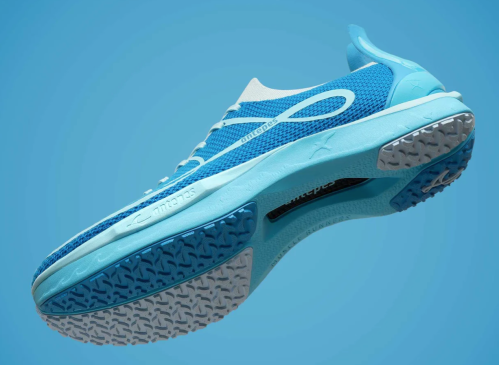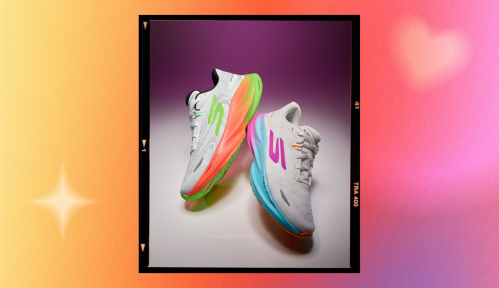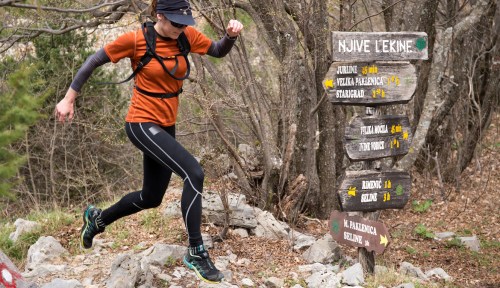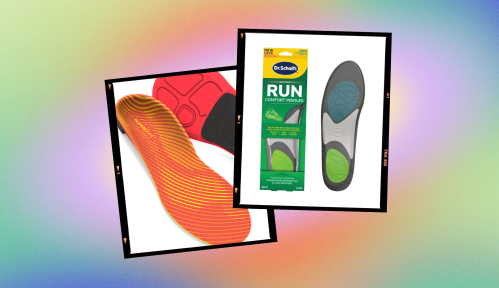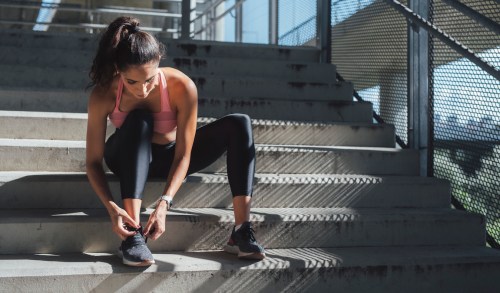Our editors independently select these products. Making a purchase through our links may earn Well+Good a commission
What It Feels Like To Run in ‘Form-Improving’ Shoes That Are More Cushioned in the Toes Than the Heel
Learn what the Antepes Muscle Runner, designed to encourage forefoot running, actually feel like to run in.
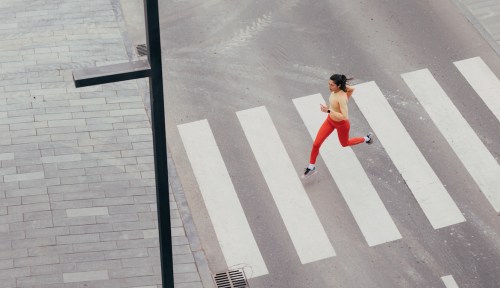
Pay attention to the runners you see on your regular route, and you’ll notice that the vast majority of them heel strike, meaning they land on the heel of their foot before rolling through to the toes.
Experts in This Article
board-certified podiatrist, foot and ankle surgeon
That’s in stark contrast to the mid- to forefoot strike that you’ll see on elite runners, which experts say is more efficient but often difficult for more casual runners to come by.
Enter the Antepes Muscle Runner ($225), a new running shoe that aims to get everyone landing on their forefeet. It’s built with a unique 10mm heel-to-toe gain. Yes, you read that right—unlike most running shoes, which feature more cushion in the heel than the toe, in the Muscle Runner, the forefoot sits on top of 27.5mm of cushioning while the heel has just 17.5mm. This design is supposed to make it nearly impossible to heel strike, and thereby to improve runners’ form over time.
Unsurprisingly, the Muscle Runners haven’t launched without their share of criticism—nearly every mention of the shoe on social media comes with commenters predicting Achilles blowouts. I decided to try them for myself, and to see what a podiatrist had to say about their unique design.
Antepes Muscle Runner — $225.00
Sizes available: M5/W6.5 to M13.5/W15Weight: 9.0 oz (in the M8.5)Colors: 2Heel-to-toe gain: 10mm
Pros:
- Light
- Sustainable materials
- Can build strength and encourage better running form
- Comes with a foam roller
Cons:
- Difficult to put on
- Slight heel slippage and rubbing
- Risk of injury or excessive soreness if worn too much
- Feel slow and awkward at first
The story behind the Muscle Runners
Although heel striking is known to be less efficient than mid- or forefoot striking, it doesn’t necessarily have to be a bad thing. The problem arises when heel striking causes runners to overstride, or step out too far in front of their hips, which can be a recipe for injury. That was the case with the Muscle Runner’s inventor, Shah Behnamian, who couldn’t get rid of nagging running injuries until he learned to land on his forefoot. When he went to look for shoes made for forefoot striking, he came up short (though, to be fair, they do exist—Newton has made some over the years) and decided to make them himself.
Behnamian calls the shoes “Muscle Runners” because he says running in the shoes is more “muscle intensive” than what runners who heel-strike may be used to. (For that same reason, the shoes come packaged inside a foam roller, and Antepes encourages runners to foam roll before running in the shoes to warm up the calves, as well as afterwards to help them recover.)
The 10mm heel-to-toe gain (meaning there is relatively little cushion under the heel, and lots under the forefoot) is perhaps the shoe’s most unusual design element (Behnamian came up with it by experimenting with shaving down the heel on other running shoes), but the Muscle Runner has some other innovative features, too.
There’s what Antepes calls the HeelX technology: In order to reduce contact on the Achilles tendon, the shoe’s upper sits about 5mm lower than usual on the heel, which is instead locked into place with “extensions” on either side of the Achilles (that look like wings coming off the back of the shoe). That heel grip is especially important when forefoot striking, when the heel is more likely to slip out.
The Muscle Runner also features a carbon plate, which Behnamian says is more flexible than the carbon plates in most other running shoes, and is intended less to add propulsion and more to support the toes and distribute weight to the ball of the foot. It also has a dual-layer TBE foam, with a softer foam directly under the forefoot and a stiffer bottom layer for ground contact to aid in stability when landing on the forefoot.
Behnamian admits that the shoe is “pretty aggressive,” and isn’t intended to replace your daily trainer. The Muscle Runner isn’t designed to go further than six miles, and should be used only as an occasional training tool. “This shoe is like taking your feet to the gym,” he says, adding that unless you’re already a strong forefoot striker, soreness is inevitable. He recommends starting by running just half a mile in the shoes and working up to slightly longer distances.
Though his target audience is high school and collegiate athletes, Behnamian says he believes the shoe can help even casual runners who are heel strikers develop a more efficient running form. And he adds that a more accessible model of the shoe may be in Antepes’ future.
What a podiatrist has to say
American Podiatric Medical Association spokesperson Mark Mendeszoon, DPM, a podiatrist who owns two running shoe stores in Ohio and Pennsylvania, emphasizes that this shoe will not be for everyone, and that it’s extremely difficult to change your natural running style. (He says that when he ran in Newton’s version of a forefoot-striking shoe, he developed Achilles tendonitis.) Though he’s skeptical that the shoe alone can change a runner’s form, he says it does have potential for runners who already forefoot strike. He also adds that the technical components “seem to be top-notch.”
What the Muscle Runners feel like on the run
After a handful of runs in the Muscle Runner, I am glad to say that my Achilles are still intact. I did follow Behnamian’s advice and proceeded with caution, especially as someone who definitely heel strikes when I’m not thinking about it. I haven’t run more than three miles at a time in the shoes, and have given myself a few days in between taking them out.
My first challenge in the Muscle Runners was getting them on: The merino wool and tencel uppers don’t have much give (Behnamian says you technically don’t even need the laces—that’s how secure the upper is), and the heel wings are a bit tricky to navigate.
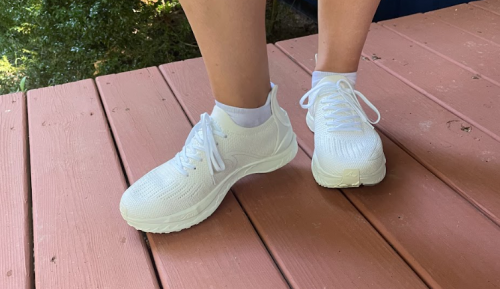
I found that even walking in the shoes takes some getting used to, and once I started running, I felt hyper-aware of how I was landing, and unsure if I was doing it right. (Should I avoid letting my heels touch the ground at all, or allow my foot to roll through to the heel? Can I land on my midfoot or does it have to be on the ball of the foot?) It took until about my third run in the shoes for me to be able to just run without thinking about it, and I settled into some sort of forefoot/midfoot strike.
Though I felt like I was running fairly uptempo (and my legs were tiring accordingly), my watch tells me that my runs in the Muscle Runners were among my slowest ever. That wasn’t entirely unexpected—after all, the Antepes website somewhat hilariously advertises that running in the shoes will “increase your heart rate.”
After my first few runs in the shoes, I did notice some muscle and Achilles soreness, but nothing too out of the ordinary. One place I did have pain: The backs of my ankles, where I developed blisters from my heels slightly slipping around.
Will I be logging more miles in the Muscle Runners? Probably not too often, but I could see myself taking them out for a short run occasionally on days when I want to focus on my form—and can afford to be a little sore the next day.
Sign up for the Well+Good SHOP Newsletter
Get exclusive deals on wellness, beauty, fitness, and food products that have been hand-picked by our editors.
Got it, you've been added to our email list.
